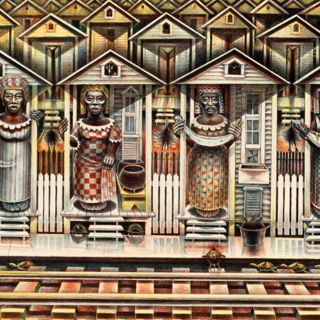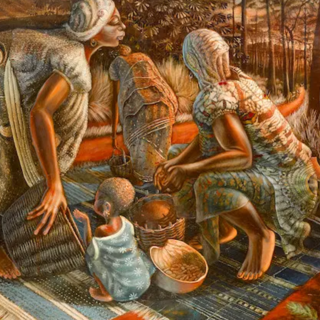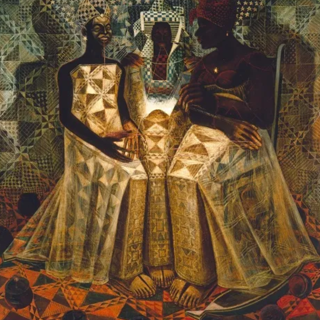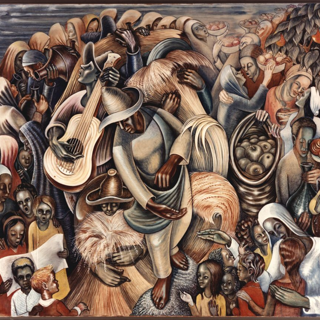John Thomas Biggers (April 13, 1924 – January 25, 2001) was an African-American muralist who
came to prominence after the Harlem Renaissance and toward the end of World War II.
Biggers created works critical of racial and economic injustice. He also served as the
founding chairman of the art department at Houston's Texas State University for Negroes
(now Texas Southern University), a historically black college.
Biggers was born in a shotgun house built by his father in Gastonia, North Carolina. His father Paul was a Baptist preacher, farmer, shoemaker, schoolteacher, and principal of a three-room school. His mother Cora was a housekeeper for white families. He was the youngest of seven children.
His mother sent John and his brother Joe to Lincoln Academy, an American Missionary Association school for African-American children in Kings Mountain, North Carolina.
After graduating from Lincoln, Biggers attended Hampton Institute (now Hampton University), a Historically Black College (HBCU). Biggers planned to become a plumber (his Hampton application included boiler room drawings).
His life took a dramatic change of course when he took an art class with Viktor Lowenfeld, a Jewish refugee who in 1939 had fled from Nazi persecution in Austria before World War II. Lowenfield introduced his students to works by African Americans and helped them
understand the religious and social context of African art, of which the Hampton Museum had a significant collection. In 2016, The Mint Museum in Charlotte, N.C., Day of the Harvest opened a multi-year exhibit John Biggers: Wheels in Wheels which includes 12 important paintings, drawings and prints, as well as a rare example of the artist's sculpture. "Through the use of a rich symbolic language and beautiful craftsmanship, Biggers found connections between personal, familial, and regional histories, traditions, symbols, which he wove together to articulate broader cultural and historical concerns,"the exhibit promotion stated. Themes that repeat throughout his career - the importance of women, family and triumph over adversity - are evident in the works on display.
To see more about Biggers’ life and his influences on the art community, check here, here, and here.




